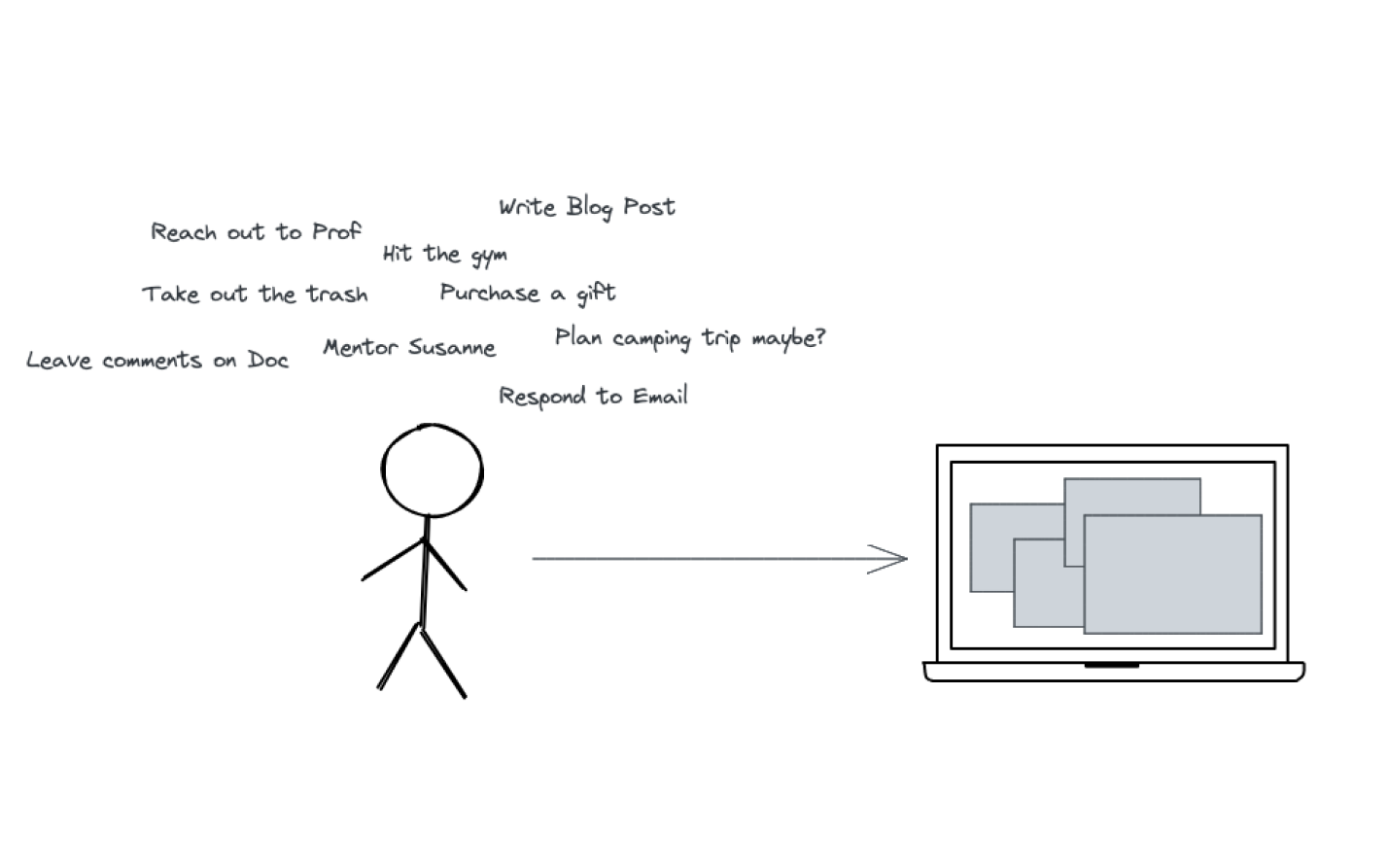This post continues my previous one about app-centric computing.
As a recap, I argue that every large shift in personal computing happens as a result of enabling new interactions with information.

paradigm shifts chagnge the way people interact with information
Each transition gives new platforms and apps, changing the consumer experience.
And in present day, 2021, we access information so fast and easily, that it just eats us alive. Information consumes our focus and attention, it’s overwhelming, and a world of apps makes this divide wider.
The next shift is is what I call contextual computing. I’m no p.h.d., so don’t hold me to it, but I think that’s it’s where we’re headed.
Tell Me Why
I like to think of context as the invisible glue that holds our apps together.
Everytime we open an app, we open it with a purpose. Even if it might be to just read the news, or send an email. An app is how you want to get something done, context is why you want to get it done.

we translate context from our heads to a computer
Context creation is a subtle step that we often overlook. It’s because accessing information is super easy. In fact, the premise of Chrome and its rise to popularity was the essence of speed and the lightweight nature of accessing new information.
However, it is still up to you the user to curate your information. Computers today have no clue why you’re doing things.
What is context switching really?
The idea of a *context-switch* is the friction we have in this translation between our heads and computer. And as I mentioned, apps today are amalgamation of multiple actions and purposes. Not contexts.
The more “contexts” or things you have to do - all a computer sees are more tabs, windows, and apps you have open.
Context-Centric Computing
To create computers that are more aware, we need information to organized contextually.
It’s not fine to switch between apps. We need only tiny bits that are related to a context. Hence the struggle with finding email threads, or old documents, and websites we visited. Apps are too big.

fragments of information make up a context
A context-centeric approach to computing introduces a better bridge between how humans think and how information is stored. Instead of information living inside of an app, it lives in a context.
So it's kind of like app groups?
Contextual organization is focused more around fragments of apps. Think of it like snippets. Apps are a combination of multiple contexts. We want only the pieces of an app that are relevant to the job we care about.
Why Context-Centeric?
A context-centric world gives us new abilities:
- Instantly focus and de-focus on things
- Fight distractions from non-context related items
- Instantly retrieve and get all the tidbits we need at once
- Share entire workflows in one swoop
- Computers can suggest how to navigate an unfamiliar context
How?
Context is tricky. For one, how do you even define a context? How can a computer even begin to fathom context? How do we move away from the chunky apps of today even?
The old-fashioned way would be to manually drag & drop information into your “contexts”.
Most people do this today with bookmarks, notes, and folders. It can be tedious. You forget things exist. Too many things pile on. Your life never changes.
Intent Mining
So, the obvious future is to use AI and machine learning to remove the friction. This is why big tech has an obsession with ecosystems.
[Ecosystem Images]
Nobody but Amazon, Google, Apple, or Microsoft has the surface area needed to make things work. You need to be everywhere: mobile, desktop, living room and collect treasure troves of people parameters. I call this intent mining.
To get it right for so many people, across so many variables, this is not an easy problem. There are tradeoffs with privacy, with regulation, and own
But I have a different hypothesis. Maybe you don’t need AI (not yet) to get to that future.
Read about Amna and the context-first interface.
Draft Post
This post is draft mode. You will need to provide a password to read it.
